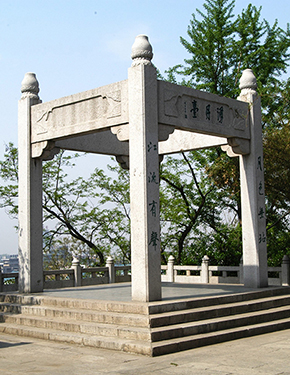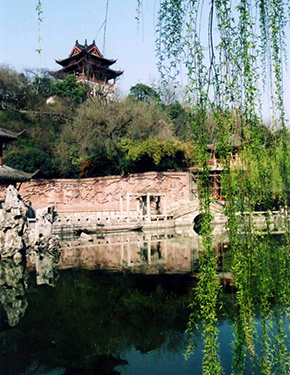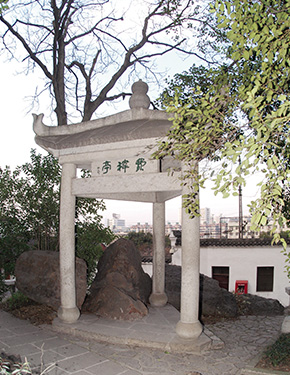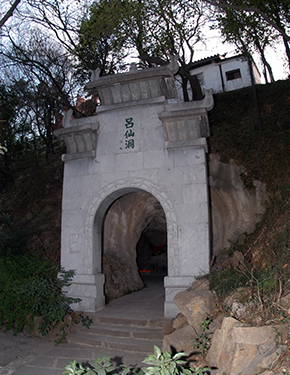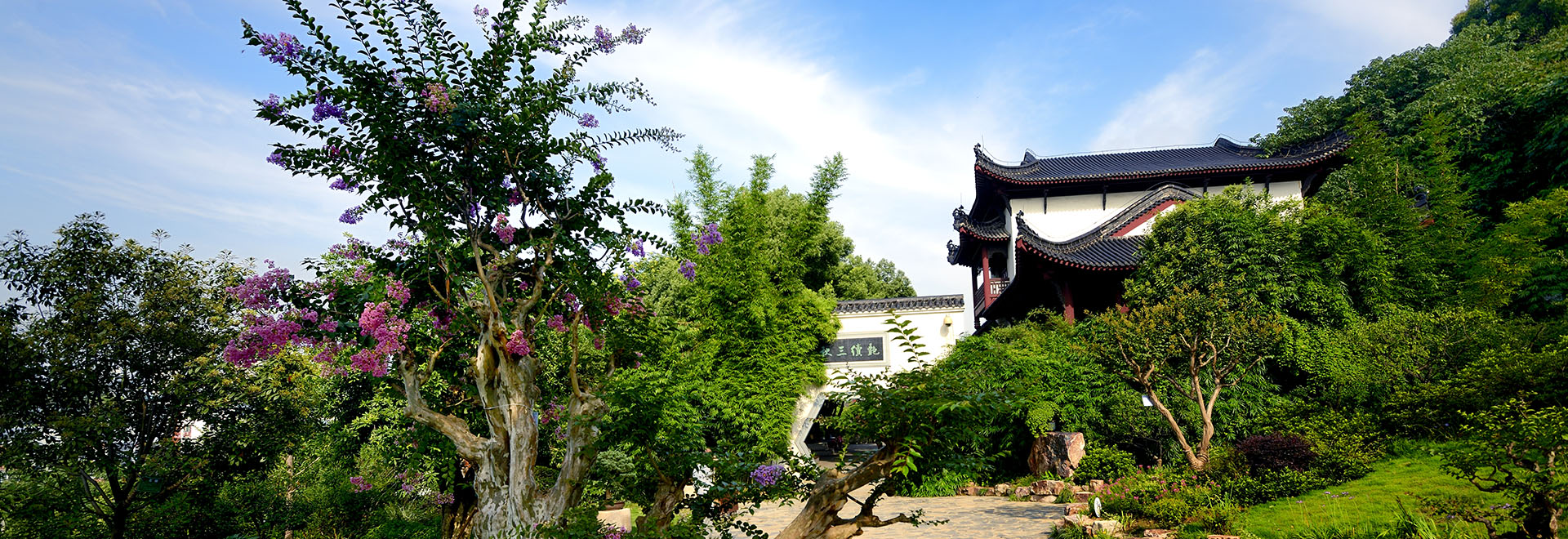
Qizhang Pavilion
- Nomal
- Enlarge
- Reduce
It nestles 548 m east of Yellow Crane Tower and 274 m northeast of White Cloud Pavilion. It is just 20 m or so away from Yue Fei’s Exploits Arch. Its sole purpose was to commemorate Niu Sengru who ever held Military Commissioner of Wuchang during Baoli Period of Tang’s Emperor Jingzong.
Niu Sengru was a Tang presented scholar. In the 1st Year (825) of Emperor Jingzong’s Baoli Period, he was appointed Head of Ezhou Prefecture, Military Commissioner of Wuchang and Surveillance Commissioner of Five Prefectures—Ezhou, Yuezhou, Mianzhou, Qizhou and Huangzhou. Upon his arrival, Niu addressed overstaffing by streamlining the bureaucracy, curbed taxes on plebs and asked the emperor to abrogate Mianzhou and incorporate Hanyang and Hanchuan into Ezhou. Even Jiangxi was therefore included in the prefecture. Such measures boosted local trade, business and economy. At that time, Jiangxia had a collapsible earthen city wall that demanded yearly repair by paving it with green straws. This project cost more than 100,000 taels of silver. So, it is easy to imagine how much time and effort would be needed back then. It took Niu 5 years to transform the earthen city into a bricked one. Based on the former Xiakou City, this new city expanded so as to touch Sand Lake on the north, Little Turtle Mountain on the east, Ziyang Lake on the south and the west end of Snake Mountain on the west. In this way, Yellow Crane Tower stood alone with a large space, unlike the past watchtower anymore. It not only facilitated sightseeing, but also increased the architectural depth. Later in the 4th Year (830) of Emperor Wenzong’s Dahe Period, the official was transferred to the capital. And when Niu died in the 1st Year (847) of Dazhong Period, he was posthumously titled “Duke of Qizhang.” To commemorate this statesman, a pavilion was built at the site where he ever gave banquets. Centuries later, Lu You witnessed but a deserted Qizhang Pavilion on Snake Mountain of Wuchang and recorded this finding in My Journey to Shu when he came here in the 6th Year (1170) of Southern Song’s Qiandao Period. A Collection of Poetry and Prose on Yellow Crane Tower compiled in Ming Era centuries later also says, “In the past, this place had a Qizhang Pavilion where Niu Sengru once entertained others.”
It got rebuilt in the spring of 1994. Facing the west, this pavilion is in fact three interlinked pavilions made of red sandstones. Every sub-pavilion has 8 such stone columns, with each featuring 3 m height and 0.9 m circumference. Yet the total number is 20 as A and B share 2 columns and B and C share another 2 ones. The subpavilion dimensions are: A, 3.66 m diameter, 6.9 m height; B, 3.63 m diameter, 5.23 m height; C, 3.61 m diameter and 5.07 m height. A featured with flying double eaves and cap-shaped roof stands 7m, greater 2 m than B and C. Such an architectural trio is something rare. The name of this pavilion styled with Jiangnan gardening is Lou Shibai’s inscription.
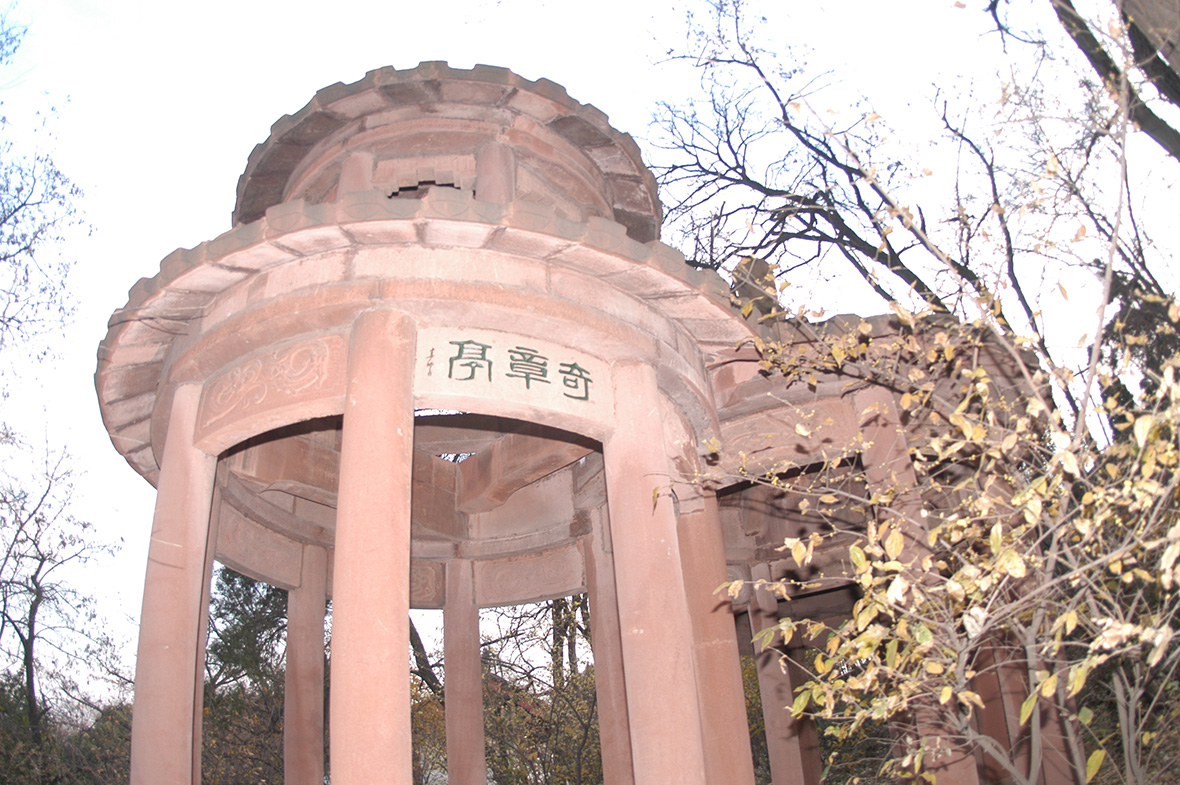
Tourist Service
- consulting hotline
Service hotline: 027-88875096
Supervision hotline: 027-88848188
027-12301
(Wuhan Tourism Bureau.)
027-87124701
(Hubei Tourism Administration)
- Official qr code.
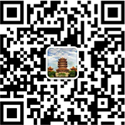
Scan focuses on the yellow crane tower.
- Online consultant
- Complaint and advice

